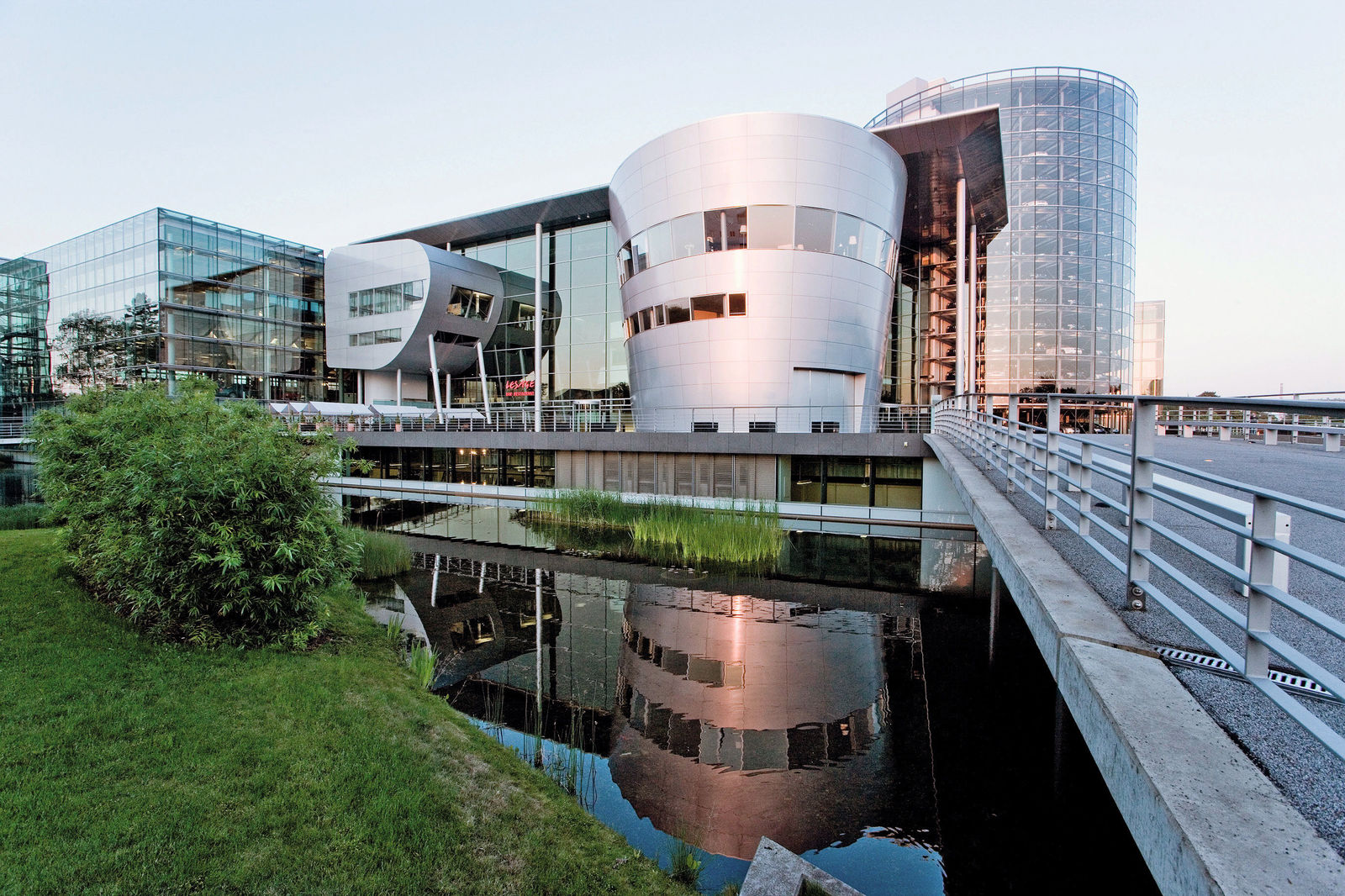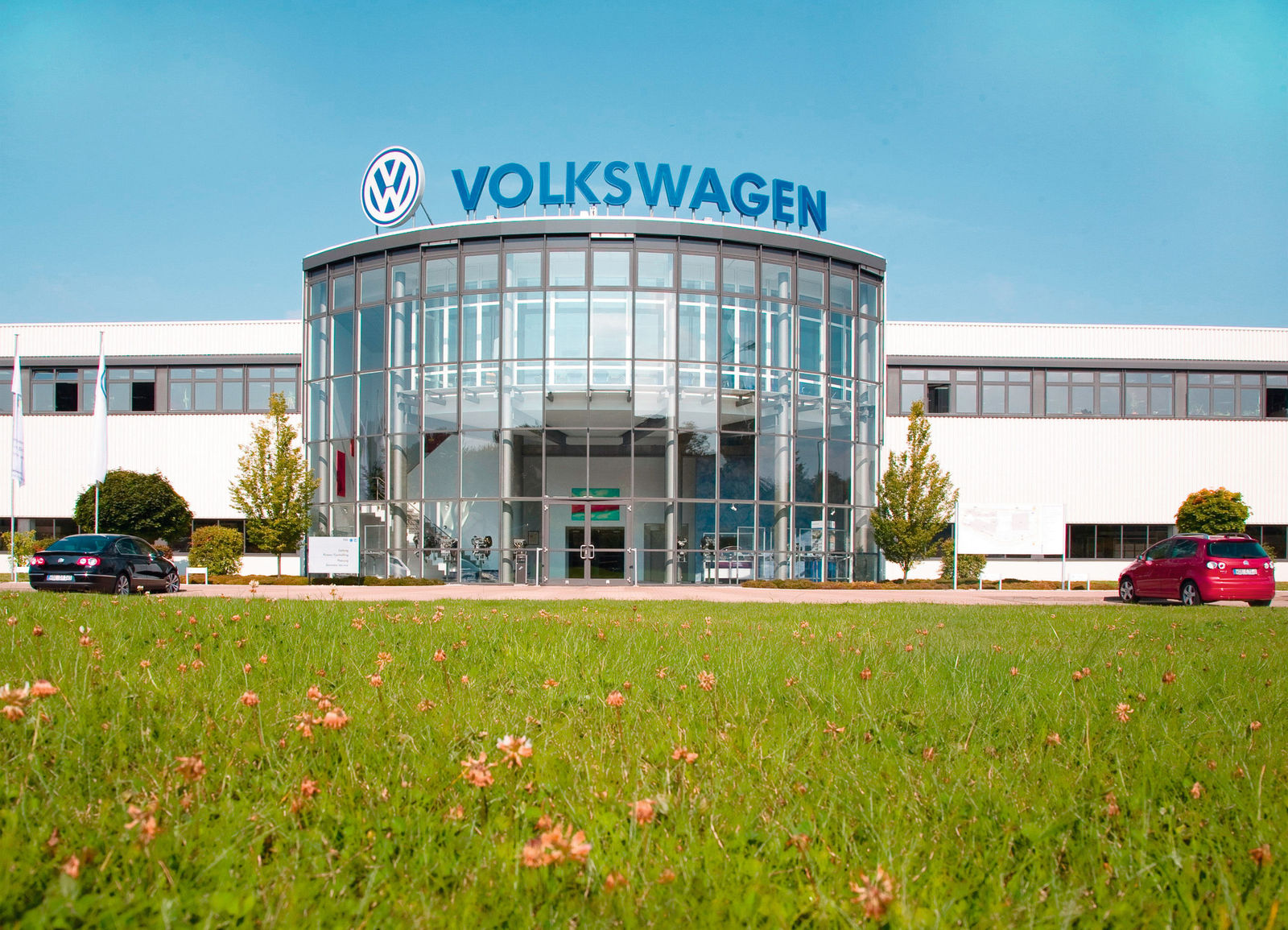Where were you when you heard about the fall of the Berlin Wall? Professor Carl Horst Hahn Jr., 93, stands at the door of his car and pauses for a moment. A small smile flits across the corners of his mouth because he knows that his answer is not especially impressive: “I was at home and learned about it on television.” He pauses briefly and adds: “It was a very good day for the people, not just for those in Saxony.” Why is that? “More later!” The reason for the interruption is that the former CEO of the Volkswagen Group – Hahn headed the Group from 1982 until 1992 – doesn’t have any time right now. He has to take off for the start of the Sachsen Classic, a classic car rally. Today he is behind the wheel of a Polo G40 fromthe Volkswagen Classic collection, whose model year of 1992 references an exciting period of change in Germany.
For jobs and prosperity
A special relationship exists between the former Volkswagen Group CEO Carl H. Hahn and Saxony and the other East German states. Hahn was head of Volkswagen when the Wall fell in 1989. A retrospective
The end of August 2019 marks the 17th time participants in the Sachsen Classic drove with around 200 classic cars through historically significant locations in the environs of Dresden and Leipzig. At the starting line of the prestigious classic car rally, not only the fantastic rarities representing various makes and eras of automotive history were diverse, but also the vintage-car drivers themselves: celebrities, automotive journalists, car collectors, and even racing amateurs leading the way with squealing tires. One of these drivers stands out by being particularly inconspicuous: Carl H. Hahn. For one thing, because he can be considered an active driver as well as a classic car enthusiast; for another, the tall 93-year-old Hahn radiates an air of calm and composure.
Carl H. Hahn takes the time to chat, have a group photo taken – “happy to oblige” – and sign autographs. During the lunch break in Werdau (Torgau), between Leipzig and Dresden, there are even more guests and participants asking him for a selfie or to take a conventional photograph. “It’s nice to see you here” is something he hears often during the three days in which the Sachsen Classic takes the drivers through dozens of towns in Saxony and Saxony-Anhalt. Perhaps simply because they can tell that Hahn enjoys being here.
To his fans Carl Hahn is simply “the man who brought Volkswagen to Saxony.” The local saying says it all: that Hahn was the driving force behind Volkswagen gaining a foothold in Saxony after the political collapse of the GDR, which at the time was a very important signal, the starting gun for economic development in the East.
This commitment first secured jobs at the Trabant factory site in Zwickau, the engine building facility in Karl-Marx-Stadt (now Chemnitz again) and in the cylinder head production site in the old Wartburg plant in Eisenach (until it was relocated to Chemnitz in 1996). New jobs came with the expansion of the plants and ultra-modern production facilities as well as in the supply industry and skilled trades and brought new prosperity to Saxony. For that reason Carl H. Hahn remains a prominent figure who represents courage, resolve and economic rebirth – and not only in this region.
But what ties Carl Hahn to Saxony? “I was born in Chemnitz in 1926. It would be terrible if you didn’t remember your roots – regardless of where in the world you are,” says Hahn.
He first came into contact with car manufacturing as a child. Before World War II, his father had a leadership position at DKW in Zschopau, near Zwickau, and later at the newly-founded Auto Union in Chemnitz.
Saxony — home of the automobile
However, Carl Hahn’s attachment to his homeland is, of course, not the only reason why three Volkswagen plants are located in Saxony today. “Already as a schoolboy, in my childhood, I got to know the Saxon industrial workers and their camaraderie, their sense of duty and attention to quality. Since industrialization, the Saxons have always been people with an entrepreneurial mentality who work creatively. Saxony was one of the wellsprings of the automobile, but also of creativity in many areas, such as mechanical engineering,” Carl H. Hahn explains.
That’s another reason CEO Carl H. Hahn strongly supported maintaining contacts with East Germany long before the fall of the Wall. Volkswagen had already had compensatory transactions with the GDR – 10,000 Volkswagen Golfs were exported, and in return Volkswagen received large ERFURT presses and optical-technical projection equipment from Carl Zeiss in Jena for the planetarium in Wolfsburg, for example.
These relationships were intensified in the 1980s under Carl H. Hahn. As Hahn says, “We always tried to make purchases in Saxony as well. Not only the fantastic large presses from Erfurt, which we sent worldwide throughout the Group, but also components like headlights from Ruhla for the Golf. Those were largely manufactured in Saxony.”
However, it was not only a matter of business to Hahn: “We also simply wanted to help. Because we knew how miserably people were doing under the difficult circumstances they had to work in.”
A future and opportunities for the people
Then, in Berlin, on November 9, 1989, the Wall fell after 28 years, which opened up the German-German border bit by bit – and Volkswagen was standing right at the head of the line. “Because of our GDR projects, we knew where and to whom we had to go, unlike all the other manufacturers. We knew all the high-ranking officials in the organizations and could immediately start working constructively,” Carl H. Hahn reminisces. Consequently, Volkswagen was able to take over a part of the GDR manufacturing facilities that were already important automotive centers before World War II: Horch in Chemnitz, DKW and Auto Union in Zwickau. That’s also where the Trabant was built during the GDR period. As Hahn says, “Perhaps the most important thing: we didn’t try to export to East Germany. We were simply committed to each other as siblings. We were brothers who helped each other. And that’s the reason why we invested all our available resources – to give the people opportunities and a future again.” The result is what you can see every day now under the banner of “thriving economic landscapes.”
After the collapse of East Germany, Volkswagen invested the equivalent of around 1.75 billion euros between 1990 and 1995 in developing the East, thereby building the foundation of an automotive infrastructure for manufacturers, suppliers and developers. Barely 30 years later Volkswagen Sachsen takes stock of the positive results: more than 5.8 million cars and 16.4 million engines built since 1990.
Even after crossing the finish line on the second of the three Sachsen Classic 2019 rally days – after several hundred kilometers behind the wheel – Carl H. Hahn’s interest in the huge changes in Germany during reunification doesn’t take a break. Leipzig? A visit to the St. Nicholas Church, which is only a few hundred yards from the hotel, is an absolute must. That place of worship was the starting point of the Monday prayers and Monday protests in the 1980s. It is here that Hahn encounters another important witness to the old system’s collapse: Pastor Friedrich Magirius. Magirius was Superintendant in 1989, later Chairman of the Round Table and then the first freely elected mayor of Leipzig. As Hahn recalls, “We experienced an overthrow, and we can’t be thankful enough for this peaceful revolution. It was the first successful one ever in German history – and thank God it happened without bloodshed. And this revolution was followed by a period of development that no one had ever experienced before. Today we are living at one of the highest standards in the world. An entire infrastructure has been built, and it is the most modern one – in medicine, in industry and also for traffic.”
On the third and final day of the rally, Carl H. Hahn enjoys availing himself of the traffic infrastructure: at the wheel of the dark blue Polo G40 with the start number 24. During the three days of the rally, the total of more than 540 kilometers has been covered, with a number of special stages. Through picturesque countryside between Dresden and Leipzig. And – almost too idyllic – accompanied by brilliant sunshine. Carl H. Hahn declares, “I simply like being on the go in Saxony.” And Saxony seems to like him too. A lot.
Carl Hahn at Volkswagen
He started his career in 1954 as an assistant to Heinrich Nordhoff, Director General of the then Volkswagenwerk GmbH. Only a year later Hahn became manager of export promotion and four years later went on to become CEO at Volkswagen of America, where Carl H. Hahn captured the US market with the Beetle. Back in Wolfsburg, he was promoted to Member of the Board responsible for Group Sales at age 38. After disagreements regarding the strategic alignment, he left the Volkswagen Group in 1972. Hahn subsequently led the then Continental Gummi-Werke AG in Hanover for nine years and developed the company into an international supplier.
In 1982 Hahn returned to Volkswagen as CEO and immediately put China on the agenda. Carl H. Hahn is considered to be one of the fathers of the Golf generation as well as of a successful multi-brand strategy. The takeovers of SEAT (1986) and Škoda (1991) took place during his tenure. Hahn’s strategic decisions laid the groundwork for the Volkswagen Group’s rise as a global player. New production sites in China, Spain, Portugal and – following the fall of the Iron Curtain – in the Czech Republic, Slovakia, Poland and Hungary, which arose in the wake of his globalization policy, established the foundation for the Volkswagen Group becoming what it is today – one of the world’s largest car manufacturers.
At the end of 1992, Hahn turned over his job as the head of the Group to former Audi CEO Ferdinand Piëch (* April 17, 1937: † August 25, 2019) and switched to the Group’s supervisory board, of which he was a member until June 1997.
You can read more about the life of Carl H. Hahn in his biography Meine Jahre mit Volkswagen [My Years with Volkswagen] (2005) and at www.hahn-carl.de


